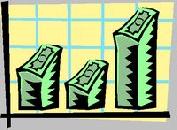Definition of operating activities

operating activities
Includes all the sales and expense activities of a business.
But the term is very broad and inclusive; it is used to embrace all
types of activities engaged in by profit-motivated entities toward the
objective of earning profit. A bank, for instance, earns net income not
from sales revenue but from loaning money on which it receives interest
income. Making loans is the main revenue operating activity of banks.
Related Terms:
Events and decisions concerning the short-term finance of a firm, such as
how much inventory to order and whether to offer cash terms or credit terms to customers.
This equals the cash inflow from sales during the period minus the cash
outflow for expenses during the period. Keep in mind that to measure
net income, generally accepted accounting principles require the use of
accrual-basis accounting. Starting with the amount of accrual-basis net
income, adjustments are made for changes in accounts receivable,
inventories, prepaid expenses, and operating liabilities—and depreciation
expense is added back (as well as any other noncash outlay
expense)—to arrive at cash flow from profit, which is formally labeled
cash flow from operating activities in the externally reported statement
of cash flows.
With some exceptions, the cash effects of transactions
that enter into the determination of net income, such as cash receipts from sales of goods
and services and cash payments to suppliers and employees for acquisitions of inventory and
expenses.
Line depicting the operating activities and cash flows for a firm over a particular period.
One of the basic financial statements; it lists the cash inflows and cash outflows of the company, grouped into the categories of operating activities, financing activities, and investing activities. The Statement of Cash Flows is prepared for a specified period of time.
An obvious but at the same time elusive term that refers to cash
inflows and outflows during a period. But the specific sources and uses
of cash flows are not clear in this general term. The statement of cash
flows, which is one of the three primary financial statements of a business,
classifies cash flows into three types: those from operating activities
(sales and expenses, or profit-making operations), those from
investing activities, and those from financing activities. Sometimes the
term cash flow is used as shorthand for cash flow from profit (i.e., cash
flow from operating activities).
One of the three primary financial statements
that a business includes in the periodic financial reports to its outside
shareowners and lenders. This financial statement summarizes the business’s
cash inflows and outflows for the period according to a threefold
classification: (1) cash flow from operating activities (cash flow from
profit), (2) cash flow from investing activities, and (3) cash flow from
financing activities. Frankly, the typical statement of cash flows is difficult
to read and decipher; it includes too many lines of information and
is fairly technical compared with the typical balance sheet and income
statement.

Refers to the generally accepted accounting principle of allocating
the cost of a long-term operating asset over the estimated useful
life of the asset. Each year of use is allocated a part of the original cost of
the asset. Generally speaking, either the accelerated method or the
straight-line method of depreciation is used. (There are other methods,
but they are relatively rare.) Useful life estimates are heavily influenced
by the schedules allowed in the federal income tax law. Depreciation is
not a cash outlay in the period in which the expense is recorded—just
the opposite. The cash inflow from sales revenue during the period
includes an amount to reimburse the business for the use of its fixed
assets. In this respect, depreciation is a source of cash. So depreciation is
added back to net income in the statement of cash flows to arrive at cash
flow from operating activities.
Generally speaking, this term refers to cash flow from
profit (cash flow from operating activities, to use the more formal term).
The underlying idea is that a business is free to do what it wants with its
cash flow from profit. However, a business usually has many ongoing
commitments and demands on this cash flow, so it may not actually be
free to decide what do with this source of cash. Warning: This term is
not officially defined anywhere and different persons use the term to
mean different things. Pay particular attention to how an author or
speaker is using the term.
The cash flow from the operating activities of a business
can be negative, which means that its cash balance decreased from
its sales and expense activities during the period. When a business is
operating at a loss instead of making a profit, its cash outflows for
expenses very likely may be more than its cash inflow from sales. Even
when a business makes a profit for the period, its cash inflow from sales
could be considerably less than the sales revenue recorded for the
period, thus causing a negative cash flow for the period. Caution: This
term also is used for certain types of investments in which the net cash
flow from all sources and uses is negative. For example, investors in
rental real estate properties often use the term to mean that the cash
inflow from rental income is less than all cash outflows during the
period, including payments on the mortgage loan on the property.
See cash flow from operating activities.
A cost that has been paid and cannot be undone or reversed.
Once the cost has been paid, it is irretrievable, like water over the dam
or spilled milk. Usually, the term refers to the recorded value of an asset
that has lost its value in the operating activities of a business. Examples
are the costs of products in inventory that cannot be sold and fixed
assets that are no longer usable. The book value of these assets should
be written off to expense. These costs should be disregarded in making
decisions about what to do with the assets (except that the income tax
effects of disposing of the assets should be taken into account).
Cash flow provided by operating
activities adjusted to provide a more recurring, sustainable measure. Adjustments to reported cash
provided by operating activities are made to remove such nonrecurring cash items as: the operating
component of discontinued operations, income taxes on items classified as investing or financing activities, income tax benefits from nonqualified employee stock options, the cash effects of purchases and sales of trading securities for nonfinancial firms, capitalized expenditures, and other nonrecurring cash inflows and outflows.
A format for the operating section of the cash-flow statement that reports actual cash receipts and cash disbursements from operating activities.
A format for the operating section of the cash-flow statement that
presents the derivation of cash flow provided by operating activities. The format starts with net
income and adjusts for all nonoperating items and all noncash expenses and changes in working capital accounts.
Net Cash after Operations
Cash flow available for debt service—the payment of interest and principal on loans. Generally calculated as cash provided by operating activities before interest
expense.

Annual fund operating expenses
For investment companies, the management fee and "other expenses,"
including the expenses for maintaining shareholder records, providing shareholders with financial statements,
and providing custodial and accounting services. For 12b-1 funds, selling and marketing costs are included.
Net operating losses
Losses that a firm can take advantage of to reduce taxes.
Net operating margin
The ratio of net operating income to net sales.
Operating cash flow
Earnings before depreciation minus taxes. It measures the cash generated from
operations, not counting capital spending or working capital requirements.
Operating cycle
The average time intervening between the acquisition of materials or services and the final
cash realization from those acquisitions.
Operating exposure
Degree to which exchange rate changes, in combination with price changes, will alter a
company's future operating cash flows.
Operating profit margin
The ratio of operating margin to net sales.
Operating lease
Short-term, cancelable lease. A type of lease in which the period of contract is less than the
life of the equipment and the lessor pays all maintenance and servicing costs.
Operating leverage
Fixed operating costs, so-called because they accentuate variations in profits.
Operating risk
The inherent or fundamental risk of a firm, without regard to financial risk. The risk that is
created by operating leverage. Also called business risk.
CASH FLOWS FROM FINANCING ACTIVITIES
A section on the cash-flow statement that shows how much cash a company raised by selling stocks or bonds this year and how much was paid out for cash dividends and other finance-related obligations.

CASH FLOWS FROM INVESTING ACTIVITIES
A section on the cashflow statement that shows how much cash came in and went out because of various investing activities like purchasing machinery.
OPERATING EXPENSES
The total amount that was spent to run a company this year.
Operating profit
The profit made by the business for an accounting period, equal to gross profit less selling, finance, administration etc. expenses, but before deducting interest or taxation.
financing activities
One of the three classes of cash flows reported in the
statement of cash flows. This class includes borrowing money and paying
debt, raising money from shareowners and the return of money to
them, and dividends paid from profit.
investing activities
One of the three classes of cash flows reported in the
statement of cash flows. This class includes capital expenditures for
replacing and expanding the fixed assets of a business, proceeds from
disposals of its old fixed assets, and other long-term investment activities
of a business.
operating leverage
A relatively small percent increase or decrease in
sales volume that causes a much larger percent increase or decrease in
profit because fixed expenses do not change with small changes in sales
volume. Sales volume changes have a lever effect on profit. This effect
should be called sales volume leverage, but in practice it is called operating
leverage.
operating liabilities
The short-term liabilities generated by the operating
(profit-making) activities of a business. Most businesses have three types
of operating liabilities: accounts payable from inventory purchases and
from incurring expenses, accrued expenses payable for unpaid expenses,
and income tax payable. These short-term liabilities of a business are
non-interest-bearing, although if not paid on time a business may be
assessed a late-payment penalty that is in the nature of an interest
charge.
operating profit
See earnings before interest and income tax (EBIT).
Operating Cash Flow
Income available after the payment of taxes, plus the value of the
non-cash expenses
degree of operating leverage
a factor that indicates how a percentage change in sales, from the existing or current
level, will affect company profits; it is calculated as contribution
margin divided by net income; it is equal to (1 - margin of safety percentage)
operating budget
a budget expressed in both units and dollars
operating leverage
the proportionate relationship between
a company’s variable and fixed costs
Operating expense
Any expense associated with the general, sales, and administrative
functions of a business.
Operating income
The net income of a business, less the impact of any financial activity,
such as interest expense or investment income, as well as taxes and extraordinary
items.
Operating lease
The rental of an asset from a lessor, but not under terms that would
qualify it as a capital lease.
degree of operating leverage (DOL)
Percentage change in profits given a 1 percent change in sales.
operating leverage
Degree to which costs are fixed.
operating risk (business risk)
Risk in firm’s operating income.
Cash Flow Provided or Used from Financing Activities
Cash receipts and payments involving
liability and stockholders' equity items, including obtaining cash from creditors and repaying
the amounts borrowed and obtaining capital from owners and providing them with a return on,
and a return of, their investments.
Cash Flow Provided or Used from Investing Activities
Cash receipts and payments involving
long-term assets, including making and collecting loans and acquiring and disposing of
investments and productive long-lived assets.
Operating Earnings
A term frequently used to describe earnings after the removal of the
effects of nonrecurring or nonoperating items.
Operating Income
A measure of results produced by the core operations of a firm. It is common
for both recurring and nonrecurring items that are associated with operations to be included
in this measure. operating income is typically found in multistep income statements and is a pretax
measure.
Operating Lease
One where the risks and benefits, as well as ownership, stays with the lessor.
Operating Line of Credit
A bank's commitment to make loans to a particular borrower up to a specified maximum for a specified period, usually one year.
Operating Loan
A loan advanced under an operating line of credit.
Operating Expenses
The amount of money the company must spend on overhead, distribution, taxes, underwriting the risk and servicing the policy. It is a factor in calculating premium rates.
cash burn rate
A relatively recent term that refers to how fast a business
is using up its available cash, especially when its cash flow from operating
activities is negative instead of positive. This term most often refers
to a business struggling through its start-up or early phases that has not
yet generated enough cash inflow from sales to cover its cash outflow for
expenses (and perhaps never will).
Statement of cash flows
Part of the financial statements; it summarizes an entity’s cash
inflows and outflows in relation to financing, operating, and investing activities.
Core Earnings
A measure of earnings that includes only the results of the primary operating
activities of the firm. It is most common to see the measure used by financial firms.
Related to : financial, finance, business, accounting, payroll, inventory, investment, money, inventory control, stock trading, financial advisor, tax advisor, credit.




